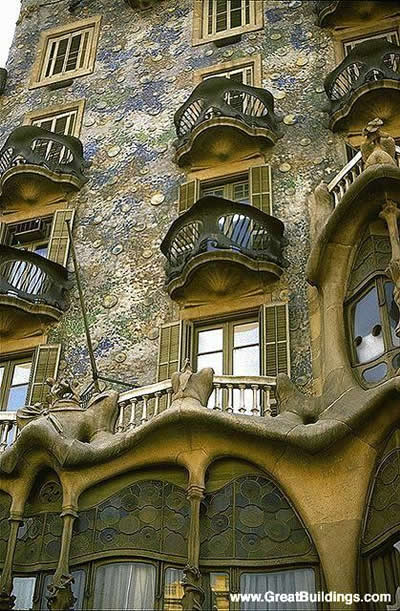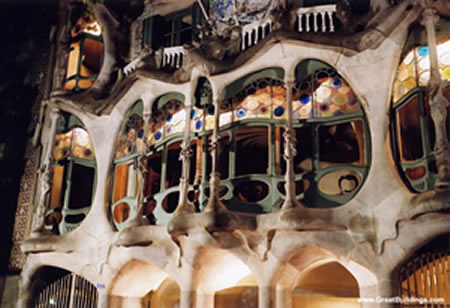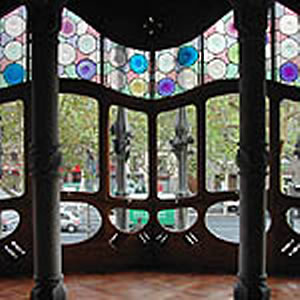












 |
 |
 |
 |
 |
 |
 |
|||||||
 |
 |
||||||||||||
 |
|||||||||||||
 |
|||||||||||||
 |
|||||||||||||
 |
|||||||||||||
 |
Casa Batllo Known as the House of Yawns due to the dramaticaly oversized windows, this beautiful building is a great example of animal in architecture. Made of mere concrete this structure is a massive piece of artwork. Built as an apartment building it seems to be a place from a fairytale. The first things to grab your eyes are the great pillars that seem like massive legs. Following up are the curved balconies that border the base of beautiful windows that lead to a magnificent dragon spine roof. The facade glitters with many different colors, no edges or corners are on this mystical building, the walls are rounded to continue the effect of the smooth skin of this dragon inspired structure.
|
Inside the Casa Batllo The inside of the Casa Batllo has such organic imagery to seem as though it lives and breathes. Spirals and smoothness make it seem as though it moves, some even have the feeling of growth. Its impossible to believe that this creature of a building was nearly demolished. But Gaudi saw the potential in this structure to convince Josep Batlló that they could keep the original framework and just remodel it into a jewel on the fin de siècle Barcelona. Gaudi knew that for his ideas to come to life he had to sway the municipal building regulations. He submitted vague plans to the city council to achieve permits do to so. Later through construction the city ordered the construction to stop due to a lack of permits. One thing Gaudi had not specified was that he would push the lower three floors into the sidewalk by 2 feet. By the time the city intervened the remodeling was nearly done and 15 days later the upper floors were rented out. The bottom floor was rented out to an antique shop.
|
 |
The Facade |
Play with Light Gaudi used the presence of light to make this building a great example of how light effects space. He had created the impression of a curved window by successively placing panels at right angles. Because the panels are linked together by slide mechanisms, when they are opened the living room is fully lighted. In the center of the building there is a large skylight. On the walls of the upper floors they are covered in cobalt-blue tiles. As these tiles proceed downward their color fades to white. Because the darker tiles are closer to the skylight, they reflect less light than the white tiles at the base of the walls. Due to this effect, when they are viewed from below the patio walls, the tiles look as though they are a continuous blue color. With this same idea in mind, Gaudi has designed so that smaller windows are nearer to the top of the patios and larger ones near the bottom. To achieve this beautiful design he studied Islamic, Gothic and baroque traditions. He achieved his promise of remodeling this condemned building into a jewel on the face of Barcelona. |
 |